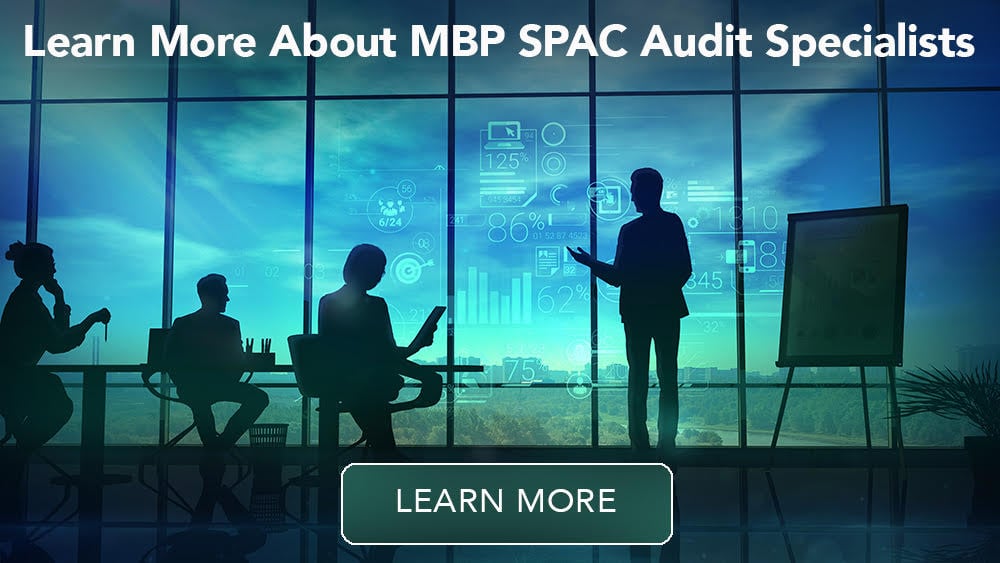Financial reporting, governance, and internal controls are seen as "risks" to investors
On March 31st, the SEC’s Acting Chief Accountant, Paul Munter, issued a lengthy “public statement” detailing concerns about private companies' readiness that go public through a SPAC merger to be successful as listed companies. His admonitions come as SPAC IPOs have exploded in the first quarter of 2021, with 298 SPACs raising over $87 billion, nearly 24 times the $3.49 billion raised by 13 SPACs during the comparable period in 2020. At the same time, SPAC IPOs that had been trading at huge premia to the cash held in trust and outperforming the S&P back in February have seen a significant retrenchment, with an average return of just 1.5% for SPACs that debuted in Q1 2021, according to Renaissance Capital.
The Chief Accountant’s missive is the latest in a series of cautionary proclamations from the SEC, which include an “Investor Bulletin” entitled “What You Need to Know About SPACs” in December 2020 and an “Investor Alert” warning about “Celebrity Involvement with SPACs” on March 10th, 2021. Recently the SPAC format has attracted a wide range of bold-face sponsors, including former Trump economic advisor Gary Cohn, former NFL quarterback Colin Kaepernick, tennis legend Serena Williams, basketball star Shaquille O’Neal, and tech billionaire Peter Thiel. The SEC noted that: “Celebrities, like anyone else, can be lured into participating in a risky investment or may be better able to sustain the risk of loss. It is never a good idea to invest in a SPAC just because someone famous sponsors or invests in it or says it is a good investment.”
According to Reuters, the SEC has reportedly opened an inquiry into the SPAC practices of leading investment banks on top of these public warnings, which may be a precursor to a formal investigation. Among the issues said to be of interest are what controls the banks have in place for vetting SPAC deals and the potential for insider trading between the point when a SPAC first goes public via IPO and when it publicly announces its proposed business combination target. This process has been further complicated since most SPAC mergers are now confidentially marketed to institutional investors to secure the PIPE investments to ensure that the SPAC merger will be funded.
John Coates, Acting Director of the SEC’s Division of Corporation Finance, put Wall Street on notice when he tweeted: “The rapid increase in the volume of SPACs represents a significant change, and we are taking a hard look at the disclosures and other structural issues surrounding SPACs.” Congress also seems poised to put SPACs under the microscope. Brad Sherman, who chairs the House Financial Services sub-committee on investor protection and capital markets, commented: "You shouldn't be able to use a SPAC to evade the disclosures and liabilities inherent upon taking a company public."

What the SEC Is Concerned About
The Chief Accountant acknowledges that special purpose acquisition companies “have been used for decades as a vehicle for private companies to enter the public markets” and that it provides an opportunity for public companies to access “capital that it might otherwise need to raise in a traditional initial public offering.” Given that one element of the SEC’s mission is to “facilitate capital formation” and that the number of U.S. public companies has been in decline for two decades, the newfound popularity of SPAC IPOs has the potential to revitalize the capital markets.
On the other hand, the SEC is also charged with protecting investors and maintaining “fair, orderly, and efficient markets.” Munter is concerned that many of the private companies that are leaping into a SPAC merger may not be ready for “prime time.” As he writes: “A merger with a SPAC may also raise unique challenges for a private target company seeking to become a publicly-traded company." He cautions that management, the board of directors, the audit committee, and auditors all need to step up their game to ensure a successful transition to a listed company.
Concern #1: SPACs Move Fast
While most private companies spend a year or more preparing for a traditional initial public offering, the SPAC merger process moves much fast, with the marketing of the PIPE investment, public announcement, merger proxy, and shareholder vote all taking place in 3-4 months. If a SPAC is towards the end of its 18-to-24-month lifecycle, the pressure to move fast is particularly intense since SPAC sponsors may be loath to have SPAC dissolve and return the funds in trust.
“The merger can occur within just a few months, triggering a number of related regulatory reporting and listing requirements,” writes Munter. “It is, therefore, essential that target companies have a comprehensive plan in place to address the resulting demands of becoming a public company on an accelerated timeline.”
In a rush to complete the business combination, the management of the target company also needs to put all the qualified people and systems to meet requirements for timely SEC filing, audits, governance, tax, and investor relations functions required of the company post-merger. The tone of the comments suggests that the SEC accounting staff is not entirely convinced that all SPAC targets are putting this investment in place.
Concern #2: SPAC Accounting Is Complicated
The SEC's accounting staff is also concerned that the finance and accounting teams at SPAC targets may not be sufficiently well versed in the accounting requirements for a SPAC merger and subsequent quarterly reporting obligations. The letter flags many complexities that management's finance and accounting teams need to tackle, including:
- Is the company required to produce financial statements according to U.S. GAAP, or is it permitted to use IFRS – which requires determining if the combined company qualifies as a Foreign Private Issuer under SEC rules?
- Which entity in the merger is the acquirer for accounting purposes? - including analysis of variable interest entities and if the transaction is a business combination of reverse recapitalization.
- How should earn-out or other performance compensation arrangements be accounted for that employ complex financial instruments?
- What timeline does the company have to adopt specific recent accounting standards, what accounting standards need to be accelerated, and how should they be disclosed due to the transaction?
Concern #3: Internal Controls & Disclosure
The requirements for internal controls over financial reporting (ICFR) for a public company are far more stringent than what is in place at most private companies, even those with substantial venture and private equity backing. Public companies also need to have a comprehensive system for disclosure controls and procedures due to the sensitivity of material information on public markets. Companies that engage in a SPAC merger need to have this painstaking housekeeping and systems in place to perform the annual assessment required by Section 404 of the Sarbanes Oxley Act and evaluate their disclosure controls every quarter.
Concern #4: Boards & Audit Committees Need to Step Up
Given the rushed nuptials inherent in a SPAC merger, companies may give short shrift to corporate governance. “It is important for boards to have a clear understanding of board members’ roles, responsibilities, and fiduciary duties, and for management to understand its responsibilities for communicating and interacting with the board,” Munter writes. He underlines the importance of the audit committee's role in auditor selection, oversight of financial reporting and internal controls, and the independent audit process. The transition to being a public company requires a reset of expectations and a disciplined approach that is a significant transition for many private growth-stage companies.
Concern #5: Auditor Qualification & Independence
While most private companies that enter into a SPAC merger agreement are likely to have audited financial statements, there are often very substantive differences in the nature of the audit required and the auditor relationship that is permitted under SEC rules.
“The target company’s annual financial statements should be audited in accordance with the Public Company Accounting Oversight Board (‘PCAOB’) standards by a public accounting firm registered with the PCAOB and compliant with both PCAOB and SEC independence requirements,” Munter emphasizes. “Given that historical audits of the target company were likely performed under American Institute of Certified Public Accountants (‘AICPA’) audit and independence standards, this may add additional time and complexity to the audit process.”
The SPAC target company and SPAC sponsors need to evaluate whether the existing auditor relationship can perform a PCAOB-compliant audit, depending on how involved they have been in prior accounting or related advisory work. An auditor cannot be independent if he or she would be in a position of auditing his or her own work. Thus, it may be necessary to re-audit the financial statements using a new engagement team or to bring in a new PCAOB-compliant audit firm to act as the independent public accounting firm going forward.
“Auditor independence, auditor registration with the PCAOB, and other audit-related requirements should be assessed early in the transaction, particularly since these considerations may result in a need to retain a new auditor or to perform additional audit procedures on prior period financial statements,” the SEC Accountant advises.
Reinforcing that Public Company Readiness is Vital
The explosion of newly funded SPAC IPOs creates a compelling opportunity for high-growth private companies that wish to raise permanent capital and attain the benefits of being publicly traded on an accelerated timeframe. But the recent guidance for the SEC underscores the risks of entering into such a transaction unprepared.
The process for getting your company “SPAC-merger-ready” and “de-SPAC-ready” is broadly similar to becoming “IPO ready” – only on a vastly compressed timescale. Companies that put in the effort in advance are likely to be in a much stronger position to attract quality SPAC sponsors, secure PIPE investments on favorable terms, and go on to have a successful journey as a public company. For all these reasons, management would be well advised to heed this timely advice from the SEC’s Chief Accountant.








.jpg?width=200&name=Howard%20Schilit%20(1).jpg)





